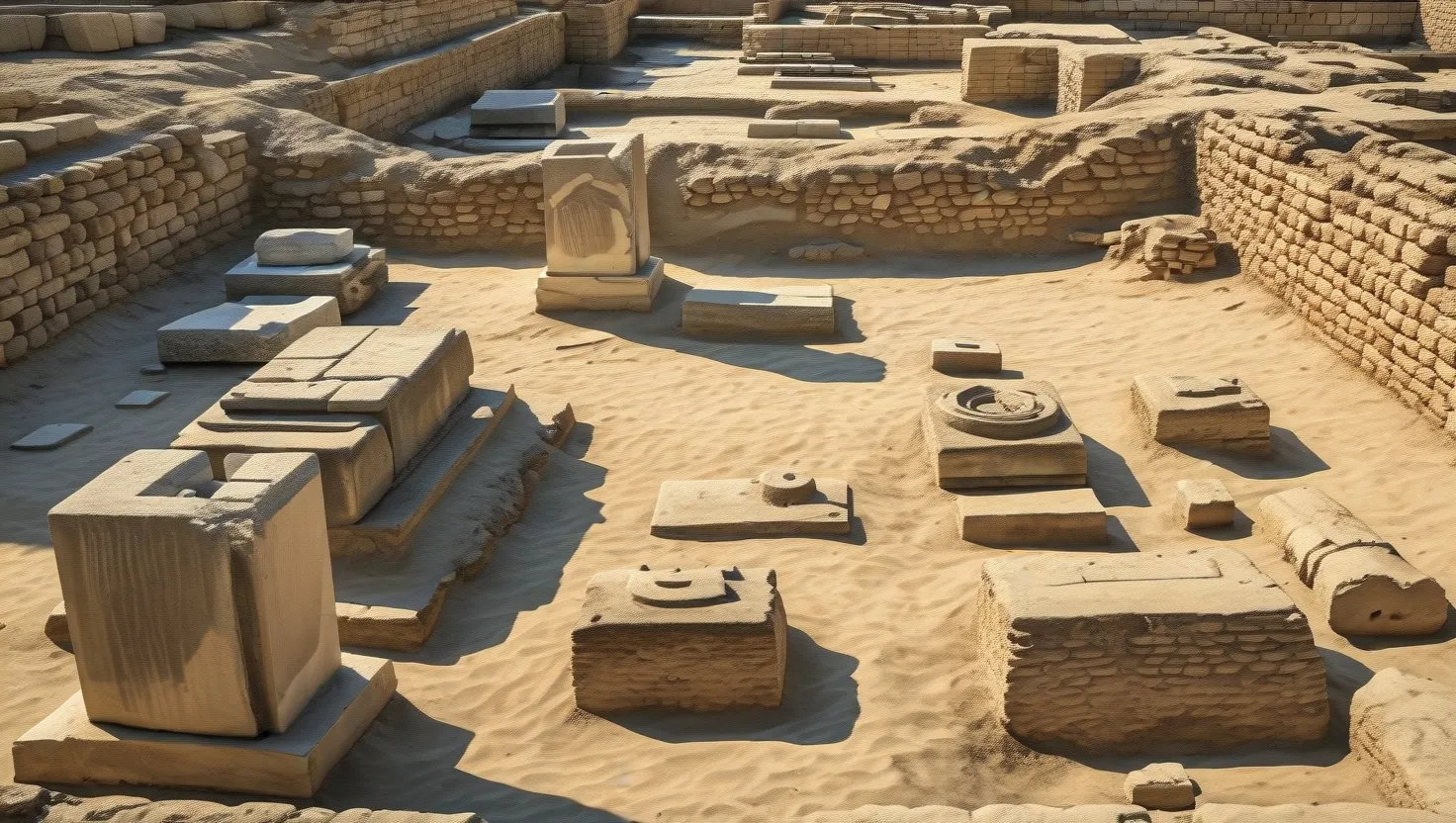If I were to walk through ancient Babylon, I’d see stone pillars standing as silent judges, declaring the laws that shaped an empire. Hammurabi’s famous code—282 rules carefully carved into diorite nearly four thousand years ago—was more than a list of dos and don’ts. It was an ambitious project: to stitch together the diverse people and customs of Mesopotamia under a single vision of order and fairness, making law accessible and understandable to all.
Let’s pause right there. Why would a king want everyone to know the rules, even those who couldn’t read? Publicly displayed laws were radical in their day. They meant the law wasn’t just what a king or priest said in the moment; it was written, available for everyone, accountable even to itself. Isn’t that a foundation of modern justice—visible, predictable, and bound by principle?
The most quoted line—“an eye for an eye and a tooth for a tooth”—has sparked endless debates. We tend to picture harsh vengeance, but I see it differently. When retaliation was unchecked, cycles of revenge could destroy families and entire villages. Hammurabi chose restraint: let the penalty match the damage, and no more. Proportional justice limits escalation, giving the victim recourse and the wrongdoer a boundary. This basic principle still powers today’s sentencing laws. Isn’t it fascinating that the impulse to contain vengeance, rather than encourage it, emerged millennia ago?
Consider this: “The first duty of society is justice.” —Alexander Hamilton
The code went further, insisting that not just anyone’s word counted in court. Multiple witnesses were needed for serious accusations, and false testimony was itself a crime. Before Hammurabi, many disputes relied on oath or ordeal—swearing innocence or throwing someone into a river to see if the gods intervened. Hammurabi replaced this uncertainty with something closer to evidence and examination. Why is this shift so important? Without the demand for evidence, law becomes arbitrary and political. With it, space opens for truth and fairness.
Did you know Hammurabi’s laws distinguished between accidents and intent? Surgeons who failed a procedure faced penalties—sometimes severe. Yet, if harm was unintentional or the result of unavoidable complications, the consequences changed. This early focus on intent echoes in modern concepts like mens rea, the idea that one’s state of mind affects guilt. We still debate how much should be blamed on fate, negligence, or purpose.
How often do we think about consumer protection as an ancient idea? Hammurabi required builders to guarantee the safety of their work. If a house collapsed and caused loss, liability landed squarely on the builder. That’s a clear precursor to today’s standards for professional licensing, building codes, and product liability. Do you trust the person who tiled your roof or wrote a prescription because there’s a law holding them accountable? That mindset started long, long ago.
“Justice delayed is justice denied.” —William E. Gladstone
Yet, the code’s influence isn’t all positive. It famously structured penalties along social classes—nobles, commoners, slaves each got different outcomes for the same crime. Today, we aim for equality before the law, but echoes remain; some legal systems still struggle with bias based on status, wealth, race, or power. Hammurabi’s code was contradictory: it protected orphans and widows but also accepted inequality. Isn’t it curious how societies, ancient or modern, still try to balance ideals with reality?
Let’s shift perspective. The code regulated merchants, trade, property ownership, and even salaries. For a time and place built on agricultural production and cross-border trade, codifying prices and wages prevented market chaos and protected communities. If someone overcharged for grain or failed to deliver goods, there were clear consequences. Fast-forward to today—are we still debating fair wages, honest contracts, or corporate responsibility?
One principle I find compelling is the very public nature of the law. Laws weren’t secretive instruments twisted in council chambers—they were posted for all to see. This ethos pushed rulers towards transparency, even if imperfect. Isn’t demanding transparency still one of our fiercest battles in justice today?
Questions naturally arise: If Hammurabi intended fairness, why tolerate inequality? Did the code reinforce class or challenge it by setting limits? Some laws let slaves marry free persons and own property, carving out spaces for dignity amid oppression. Is justice ever absolute, or always a negotiation between the ideals and imperfections of society?
Consider the wisdom of the ages: “Injustice anywhere is a threat to justice everywhere.” —Martin Luther King Jr.
Medical malpractice standards in the code fascinate me. If a doctor failed, very specific penalties followed. But what if a doctor succeeded? Rewards and payments were spelled out, too, sometimes varying by the patient’s rank. Early attempts at regulating professionals set a precedent for everything from modern hospital law to business ethics.
I often reflect on the psychological aspect of Hammurabi’s code. By making rules visible and consequences predictable, it shifted social behavior. Fear of arbitrary punishment decreased, while trust in process increased. People might have complied with law not only out of fear, but because the law itself became a respected force—a step towards rule of law, not rule by men.
Here’s a thought: If a society can only function with rules everyone knows and can count on, does written law become the real backbone of civilization?
As I read the code, I notice nuanced cases—disputes over inheritance, adoption, and child custody are addressed. Even debts, crop sharing, and land tenancy appear. The code isn’t just criminal; it’s a comprehensive depiction of everyday life. It asks: What happens when someone breaks a promise or fails to measure up in the marketplace?
Imagine standing in the crowded city square, the stone pillar looming above, carved with ancient symbols. People gather to hear a scribe recite the laws. Does the notion that law can be public—rather than whispered or manipulated—make you feel more or less secure?
The code’s religious roots also matter. Hammurabi claimed inspiration from Shamash, the sun god of justice. This divine connection lent the rules extra authority, blending faith and law. Rulers used this strategy to perennial effect—the legitimacy of law linked to the legitimacy of the leader. We see remnants in constitutional orders that cite divinity or higher values as ultimate arbiters.
Let me turn the question back to you. If justice is both human and divine, what’s the role of mercy in law? The code’s harshest punishments arise in areas of betrayal or threat—adultery, theft, violence. But elsewhere, restitution and compensation are preferred over outright vengeance. Is compensation a form of mercy, or simply practicality?
“Justice is the firm and continuous desire to render everyone his due.” —Emperor Justinian
What’s often missed in discussions of Hammurabi’s code is its spirit: it aimed to create a predictable, transparent system where disputes could be settled peaceably. That’s the very premise of modern courts. The details may differ—our punishments are less severe, our procedures more complicated—but the search for fair process and proportionate outcomes remains.
If I were writing my own code, I’d remember Hammurabi’s lessons: rules must be public and clear. Punishment must fit the crime and also prevent endless cycles of revenge. Intent matters as much as action. Specialists—builders, doctors, merchants—must answer for their work. Law should reflect both social reality and belief in shared values. Most of all, law is about building trust—not just control.
So next time I pass a courthouse, I’ll think of Babylon’s stones. I’ll ask: Are our laws meeting the mark Hammurabi set, protecting the weak, balancing classes, doling out justice fairly? I invite you to consider, what rules would you carve in stone, if you could shape the future?
“Law is reason, free from passion.” —Aristotle
The journey from Hammurabi’s stone to today’s paper and pixel law is longer than anyone could measure. Still, it’s a single path mapped by the human desire for fairness. As long as we seek justice, Hammurabi’s code stands watch, reminding us where our story began.






